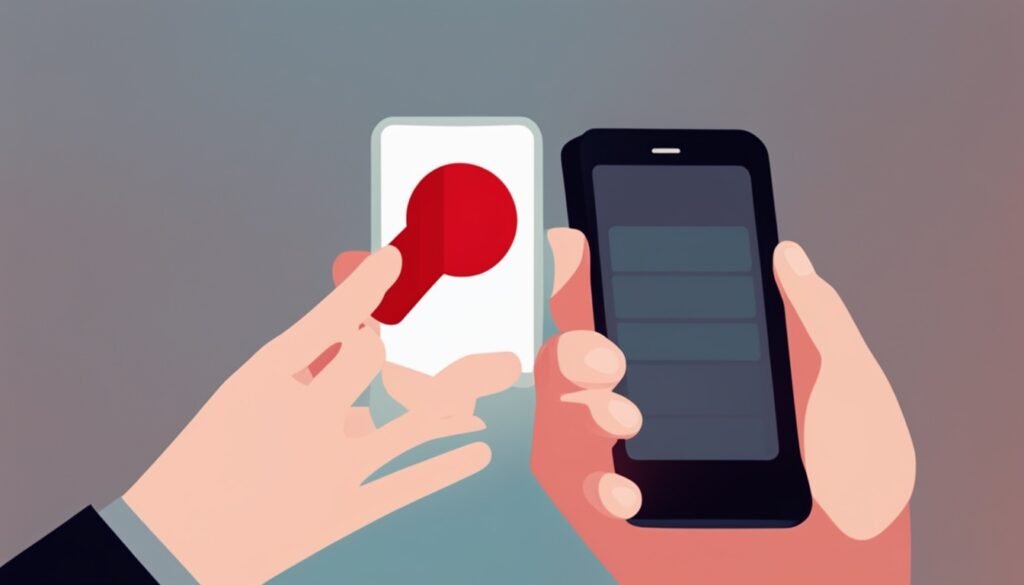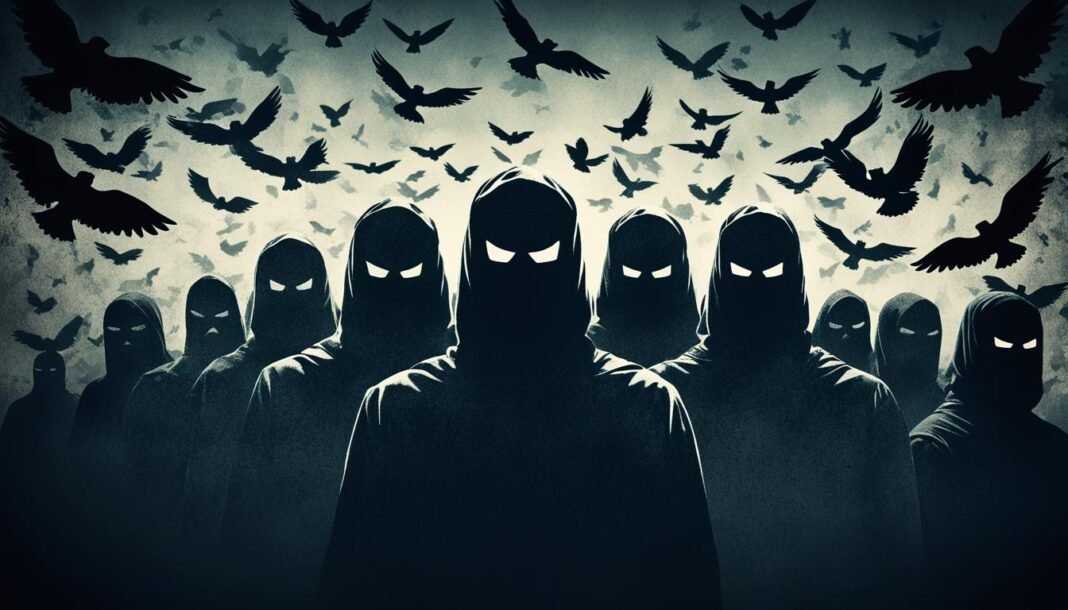The problem of Ireland Twitter trolls is getting a lot of attention. More and more, people are dealing with social media abuse in Ireland. Some really bad cases have been in the news. This has started a lot of talks about how this affects people’s mental health and society. Twitter is trying hard to stop online abuse in Ireland. It’s important to know all about this issue to keep social media healthy and fun.
Key Takeaways
- The prevalence of Twitter trolls is on the rise in Ireland, affecting numerous users.
- Online abuse prevention measures are critical in combatting social media harassment.
- Notable cases of harassment have sparked widespread public discourse.
- The mental health implications are significant for victims of online trolls.
- Twitter is actively working on strategies to address abuse on its platform.
The Rise of Twitter Trolls in Ireland
In Ireland, more people are noticing Twitter trolls. This issue has grown, bringing more online harassment on different platforms. Public figures face this issue the most. They deal with constant trolling that is very upsetting.
Why is this happening? Social media’s popularity has changed how we talk to each other. It’s now easier for us to share our thoughts. But, this also makes it easy for negative behavior to spread. Studies show that trolls often target those from marginalized communities or with strong opinions. This creates an unfriendly environment.
It’s important to understand the effects of online harassment in Ireland. Seeing the link between Twitter trolls and cyberbullying helps. This understanding can lead to discussions on how to make online spaces safer.
| Year | Reported Cases of Cyberbullying | Twitter Troll Incidents |
|---|---|---|
| 2019 | 1,540 | 300 |
| 2020 | 2,100 | 450 |
| 2021 | 2,800 | 600 |
| 2022 | 3,500 | 800 |
Understanding Twitter Trolls and Their Impact
Twitter trolls hide behind fake names, pushing behavior without facing the consequences. Their actions go beyond just being annoying. They can harm people’s mental health. Studies show that dealing with these trolls can lead to stress, sadness, and worry.
Because of this, many folks step back from online spaces to avoid more stress. This fear changes how people experience social media and warps public talks. It reduces open and rich discussions. The damage trolls do can make people afraid to share their views online, quieting important voices.
Ireland Has a Lot of Twitter Trolls
The internet in Ireland is getting more toxic because people can hide who they are. They use fake identities, which makes them more likely to attack others online. This makes Twitter in Ireland a place where trolling is common.
The toxicity of anonymity on social media
People feel free to be mean on Twitter because no one knows who they are. They can say hurtful things without worrying about the consequences. This problem has sparked a big discussion about making users more accountable for their words.
Impacts on public figures and everyday users
In Ireland, everyone from famous people to regular folks can be targets of Twitter trolls. High-profile women often face the worst of it, including threats. People’s experiences vary, with some facing constant attacks and others shocked by sudden hostility. This issue urgently needs more awareness and strong plans to fight back.

Social Media Abuse in Ireland: The Bigger Picture
Online harassment in Ireland is not just about mean tweets. It shows how aggression can grow on social media. These sites have become places where mean behavior can hide. Laws that should protect us online are falling behind fast, leaving people exposed.
In Ireland, rules for social media are changing rapidly. As more people understand the dangers of online chats, they want stronger rules. There’s a push for new laws that make both users and sites act responsibly. Victims need more support in these cases.
People are calling out for changes to stop online harassment. Activists and everyday users are starting campaigns and talking about it. They want rules that truly protect everyone. This shows that fighting online abuse is everyone’s job. We must make the internet a safer place for all.
Tragic Cases of Online Harassment
The digital world has seen many cases that show how harsh online harassment can be. People see the dangers when they stand up for important causes through stories of Twitter harassment. For example, Caroline Criado-Perez fought for women to be represented on banknotes. After her win, she faced tons of hateful messages on Twitter. This shows the big problems on the platform and questions its ability to keep users safe.
The case of Caroline Criado-Perez
Caroline Criado-Perez’s story points out the big problems with online abuse, especially against activists and women. It shows what happens when a good cause meets harsh backlash. This makes the digital world hard to navigate safely.
Personal experiences of Irish public figures
In Ireland, online harassment stories are alarming. Many public figures have talked about their scary online abuse experiences. These stories show a widespread harassment culture that hurts mental health and limits free public speech. Victims often feel alone and exposed to online attacks. Addressing the wide effects of online trolling is more important than ever.
These sad stories stress the need for us to understand and fight the culture of online abuse together. For more information on this topic, look into additional case studies of Twitter harassment and their effects on us all.
Combating Online Trolls: Strategies and Approaches
Online trolling has become a major issue, especially in Ireland. Strategies are being put in place to make the internet safer. Teaching digital literacy helps users know their rights and duties online. It’s also important for people to report any abusive behavior they encounter.
Working together is key to solving this problem. In Ireland, both governmental and non-governmental groups are working to stop trolls. They aim to create a community that values respect and empathy. Talking about these problems raises awareness and helps people stand up to trolls.
Also, tech companies and public agencies are teaming up to come up with new solutions. They are creating tools and resources to help users deal with online abuse. As these efforts continue, it’s crucial to keep improving these measures to protect users.
| Strategy | Description | Expected Outcome |
|---|---|---|
| Education Initiatives | Programs that teach digital literacy and online etiquette | Increased awareness and understanding among users |
| Reporting Systems | Tools for users to report abusive behavior easily | Reduction in online abuse through faster action |
| Collaboration | Partnerships between tech companies and public organizations | Development of effective anti-trolling applications |
| Support Networks | Creating resources for victims of online abuse | Empowerment and support for affected individuals |
The Role of Twitter in Addressing Abuse
Online abuse is a big problem for social media, especially Twitter. Twitter has worked hard to fight harassment. Still, people doubt how well these policies work.
Twitter’s response to harassment issues
To deal with harassment, Twitter changed its policies. They added better tools to report abuse, aiming to make Twitter safer. This move tries to make users more accountable for their actions.
However, some people think these steps don’t get to the heart of the problem. They say reporting helps, but rule enforcement is uneven. The constant presence of trolls shows we need to keep improving.
Twitter’s battle against harassment is ongoing. A strong plan is crucial. It must tackle incidents and help create a space where hostility is rare.
Internet Harassment in Ireland: Statistics and Trends
Recent reports show concerning statistics on online harassment in Ireland. Many have faced abuse or seen trolling on social media, like Twitter. The increase in digital chats makes these incidents common, calling for a closer look.
A large number of people in Ireland have dealt with online harassment. Research links these experiences to mental health problems. Many say they’ve either been targeted or seen data on Twitter abuse. This trend calls for more research to help make better policies.
The trends in cyberbullying in Ireland show that young people often suffer the most. Social media spreads mean comments quickly, hurting individuals’ mental health. To create safer online spaces, leaders and educators must work together.
| Type of Abuse | Reported Incidents (%) |
|---|---|
| Harassment | 46% |
| Cyberbullying | 30% |
| Impersonation | 15% |
| Threats | 12% |
For more on Twitter harassment’s impact, check out a personal story dealing with online trolling. It highlights the need to keep discussing statistics on online harassment and the ongoing trends online.
Reporting Twitter Trolls: How to Take Action
Knowing how to deal with Twitter trolls is key for users. To report abuse, there are simple steps to follow. These steps help you protect your online space. Let’s go through what to do:
- Identify the abusive tweet or user.
- Click on the downward arrow icon on the tweet.
- Select “Report Tweet” from the dropdown menu.
- Follow the prompts to specify the type of harassment.
The guide above makes it easier to report abuse on Twitter during tough times. You can also block or mute users to improve your online safety. These actions greatly reduce negative interactions.

It’s crucial to teach others how to manage online harassment as well. By telling friends and family to report bad behavior, we help create a better online world. We all have the power to fight against Twitter trolls and support each other on social media.
| Action | Description |
|---|---|
| Report Abuse | Use the reporting feature to notify Twitter of harmful content. |
| Block Users | Prevent specific users from viewing or interacting with your tweets. |
| Mute Users | Stop seeing tweets from certain users without blocking them. |
| Document Incidents | Keep records of abusive interactions for future reference. |
By taking steps against trolls, we can make the internet a nicer place for everyone. These actions help lower online trolling and build a kinder online community.
Cyberbullying in Ireland: A Growing Concern
In Ireland, online bullying is a growing worry. A spike in cases among the young highlights the serious impact of cyberbullying on youth. Kids face mean comments, targeted harassment, or public shaming. This can hurt their mental health a lot.
The way cyberbullying trends in Ireland change shows we need action. Schools and communities are key in addressing cyberbullying in Ireland. By starting educational programs, we can make everyone more aware and teach safe internet use. These efforts help kids fight back against bullies and give them the tools they need for support.
To fight cyberbullying in Ireland, we must work together. Schools, parents, and community groups need to team up. This helps kids talk to each other better online and reduces bad behavior.
| Type of Cyberbullying | Impact |
|---|---|
| Harassment | Increased stress and anxiety levels among victims |
| Exclusion | Feelings of isolation and depression |
| Impersonation | Loss of reputation and trust |
| Public Shaming | Long-term emotional trauma |
Conclusion
Twitter trolls in Ireland are a big concern that needs immediate action. This issue affects not just famous people but all who use social media. The problems caused by trolls can harm the whole social media world.
We need everyone to work together to fight online harassment. People, social networks, and government officials all play a role. It’s vital to make and follow strict rules to ensure the internet is safe.
There’s hope for a better social media environment. With ongoing efforts and new ideas, we can beat trolling. Teaching users, holding people accountable, and supporting each other are key. These steps will make online spaces safer and more positive for everyone.

